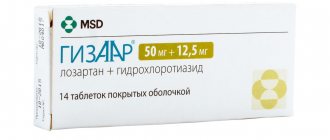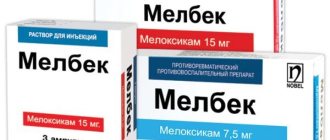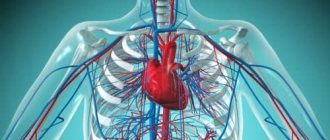Pharmacological properties of the drug Hartil
Ramipril inhibits the activity of angiotensin-converting enzyme (ACE, kininase II), causing vasodilation and a decrease in blood pressure. Inhibition of ACE activity is accompanied by an increase in renin activity in the blood plasma and reduces the level of angiotensin II and aldosterone. The antihypertensive effect is noted 1–2 hours after use of the drug, the maximum effect develops over 3–6 hours and lasts at least 24 hours. In cases of severe non-diabetic or diabetic nephropathy, ramipril slows down the progression of renal dysfunction and the development of end-stage renal failure, in which it is necessary kidney transplant or dialysis. In patients at risk of nondiabetic or diabetic nephropathy, ramipril reduces albuminuria. Pharmacokinetics. Ramipril is rapidly absorbed from the gastrointestinal tract (at least 50–60% of the administered dose), the maximum concentration in the blood plasma is achieved within 1 hour. Ramipril is almost completely metabolized (mainly in the liver) with the formation of active and inactive metabolites. Its active metabolite, ramiprilat, is approximately 6 times more active than ramipril. The maximum concentration of the active metabolite in the blood plasma is achieved after 2–4 hours. Among the known inactive metabolites are diketopiperazine ester, diketopiperazine acid, as well as the glucuronides of ramipril and ramiprilat. The binding of ramipril and ramiprilat to blood proteins is about 73 and 56%, respectively. When used in usual doses (1 time per day), the equilibrium concentration of the drug in the blood plasma is achieved on the 4th day of use of the drug. 60% of the dose is excreted in the urine (mainly in the form of metabolites), and about 40% in the feces. Almost 2% of the administered dose is excreted unchanged in the urine.
pharmachologic effect
The drug contains the active ingredient ramipril. It has an antihypertensive effect by suppressing the activity of angiotensin-converting enzyme. Reduces the conversion of inactive angiotensin-I to the active form - angiotensin-II. In addition, it reduces the level of aldosterone in the blood.
Thus, the use of the drug in patients with arterial hypertension leads to a decrease in systolic and diastolic blood pressure without the effect of increasing heart rate.
Ramipril increases patients' tolerance to physical activity and increases cardiac output.
Use of the drug Hartil
The tablets should be swallowed whole without chewing, with plenty of liquid, regardless of meals. AH (arterial hypertension) . The recommended starting dose is 2.5 mg 1 time per day (1 tablet 2.5 mg). Depending on the patient’s condition, the daily dose can be doubled every 2–3 weeks. The usual maintenance dose is 2.5–5 mg/day (1 tablet 2.5 mg or 5 mg). The maximum daily dose is 10 mg. If it is necessary to use a dose of 5 mg, instead of further increasing the dose of Hartil, consider combining it with other antihypertensive agents, such as diuretics or calcium channel blockers. Congestive heart failure. The initial recommended dose is 1.25 mg 1 time per day (1 tablet 1.25 mg). Depending on the therapeutic effect, the daily dose can be increased, doubling it every 2-3 weeks. The maximum daily dose should not exceed 10 mg. Heart failure after acute myocardial infarction. It is recommended to start using the drug on days 2–9 after myocardial infarction. The initial dose is 1.25–2.5 mg 2 times a day (1 tablet 1.25 or 2.5 mg). Depending on the therapeutic effect, the initial dose can be doubled to 2.5–5 mg (1 tablet of 2.5 or 5 mg) 2 times a day. The maximum daily dose should not exceed 10 mg. Severe non-diabetic or diabetic nephropathy, as well as its initial stages. The recommended starting dose is 1.25 mg 1 time per day (1 tablet 1.25 mg). Depending on the therapeutic effect, the dose can be increased by doubling the daily dose every 2-3 weeks. The recommended maximum daily dose is 5 mg. Prevention of circulatory disorders of the myocardium and brain - myocardial infarction, stroke or threat of death due to cardiovascular disorders . The initial dose is 2.5 mg 1 time per day (1 tablet 2.5 mg). Depending on the tolerability of the drug, after 1 week of use the daily dose should be doubled (1 tablet 5 mg). This dose can be doubled again after 3 weeks of use. The recommended maintenance dose is 10 mg 1 time per day (1 tablet of 10 mg or 2 tablets of 5 mg). Elderly patients. The use of the drug in elderly patients taking diuretics and/or with signs of heart failure, as well as with impaired liver or kidney function requires special monitoring. Dosage should be set individually, depending on the response to the drug. Patients with renal failure. With a moderate decrease in renal function (creatinine clearance 20–50 ml/min per 1.73 m2 of body surface), the initial dose is 1.25 mg 1 time per day (1 tablet 1.25 mg). The maximum daily dose should not exceed 5 mg. If it is not possible to determine creatinine clearance in a laboratory, it can be calculated from the serum creatinine level using the Cockroft equation: For men. Creatinine clearance (ml/min) = [body weight in kg • (140 – age) : 72 • serum creatinine (mg/dl)]. For women. The calculation result for men is multiplied by 0.85. Patients with impaired liver function. At the beginning of treatment with Hartil, patients with impaired liver function require careful medical supervision. The maximum daily dose in such cases should not exceed 2.5 mg. In patients receiving diuretic therapy, the possibility of temporarily discontinuing or reducing the dose of diuretics should be considered for at least 2-3 days (or more depending on the duration of action of the diuretics) before starting to use Hartil. In patients recently treated with diuretics, the usual starting dose is 1.25 mg (1 tablet 1.25 mg). In patients with fluid and electrolyte imbalance, severe hypertension and in cases where a significant decrease in blood pressure cannot be allowed (for example, with stenosis of the coronary or cerebral arteries), low initial doses, for example 1.25 mg / day, should be given preference.
What does Hartil help with?
According to the instructions for Hartil, the drug should be taken as a medicine for the following types of diseases:
- for chronic heart failure.
- with arterial hypertension.
- with diabetic nephropathy, chronic diffuse kidney diseases.
- for heart failure that occurs after acute myocardial infarction in patients with stable hemodynamics.
Medical reviews of Hartil recommend the drug as a means of reducing the risk of myocardial infarction, “coronary death” or stroke in patients with coronary artery disease, including those who have undergone coronary artery bypass grafting, myocardial infarction, and percutaneous transluminal coronary angioplasty.
Contraindications to the use of the drug Hartil
- hypersensitivity (history of angioedema associated with previous therapy with ACE inhibitors, hereditary or idiopathic angioedema);
- systemic lupus erythematosus, scleroderma (increased risk of developing neutropenia or agranulocytosis); inhibition of bone marrow hematopoiesis;
- hyperkalemia;
- bilateral renal artery stenosis, renal artery stenosis of a solitary kidney, kidney transplantation, renal failure;
- hyponatremia (risk of dehydration, hypertension (arterial hypertension), renal failure);
- liver failure;
- primary hyperaldosteronism;
- During pregnancy and breastfeeding;
- age up to 15 years.
Side effects of the drug Hartil
from the cardiovascular system and blood system: hypotension, angina, syncope, heart failure, myocardial infarction, vertigo, chest pain; very rarely - arrhythmia, tachycardia, hemolytic anemia, myelodepression, pancytopenia, thrombocytopenia, eosinophilia, agranulocytosis; vasculitis; from the gastrointestinal tract: nausea, vomiting, diarrhea; very rarely - dry mouth, anorexia, dyspepsia, dysphagia, constipation, abdominal pain, gastroenteritis, pancreatitis, hepatitis, liver dysfunction, increased transaminase levels; from the nervous system and sensory organs: dizziness, headache, asthenia; very rarely - cerebrovascular disorders, amnesia, drowsiness, convulsions, depression, sleep disturbance, neuralgia, neuropathy, paresthesia, tremor, hearing loss, visual impairment; from the respiratory system: dry cough, infectious diseases of the upper respiratory tract; very rarely - dyspnea, pharyngitis, sinusitis, rhinitis, tracheobronchitis, laryngitis, bronchospasm; from the urinary system: renal dysfunction, proteinuria, oliguria, edema; allergic reactions: urticaria, skin rash, erythema multiforme, photosensitivity, angioedema; other: weight loss, anaphylactoid reactions, increased levels of urea nitrogen and creatinine, angioedema, arthralgia/arthritis, myalgia, chills, hyperkalemia, increased activity of liver enzymes, concentrations of bilirubin, uric acid, glucose in the blood serum.
Side effects of Hartil
Medical reviews of Hartil note the likelihood of side effects. Their list is very extensive and requires detailed study. It is recommended that you familiarize yourself with the most common side effects before starting to take the medicine:
- orthostatic hypotension, decreased blood pressure. In rare cases - arrhythmia, the appearance of circulatory disorders of organs, myocardial and cerebral ischemia;
- increased proteinuria, renal failure, decreased libido, decreased urine volume;
- weakness, headache, drowsiness, nervous excitability, tremor, mood disorders, anxiety, muscle spasms;
- disturbances of perception (smell, hearing, taste, vision) and vestibular disorders;
- loss of appetite, nausea, constipation/diarrhea, pancreatitis, dry mouth, vomiting;
- shortness of breath, bronchospasm, rhinorrhea, sinusitis, rhinitis, bronchitis, dry cough;
- urticaria, itching, skin rash, conjunctivitis;
- thrombocytopenia, anemia, decreased concentration of hematocrit and hemoglobin, thrombocytopenia, neutropenia, leukocytopenia, agranulocytosis, hemolytic anemia, pancytopenia;
- convulsions, hyperthermia, alopecia, sweating;
- hyperkalemia, hypercreatininemia, increased levels of liver transaminases and urea nitrogen levels, hyponatremia.
The use of Hartil during pregnancy can lead to side effects on the fetus: various disorders of the development and function of the kidneys, a decrease in the child’s blood pressure, hypoplasia of the lungs and skull, contracture of the limbs, deformation of the skull.
Special instructions for the use of the drug Hartil
After taking the first dose, as well as when increasing the dose of a diuretic and/or ramipril, patients should be under medical supervision for 8 hours to avoid the development of an uncontrolled hypotensive reaction. In patients with heart failure, taking the drug can lead to the development of severe arterial hypotension, which is accompanied by oliguria or azotemia and rarely by the development of acute renal failure. The lower limit of systolic blood pressure during therapy in the early period of myocardial infarction is considered to be 100 mm Hg. Art. Patients with malignant hypertension (arterial hypertension) or concomitant severe heart failure should begin treatment in a hospital setting. Before and during therapy with ACE inhibitors, it is necessary to monitor the hemogram with determination of the absolute content of leukocytes and leukocyte form (at least once a month in the first 3-6 months of therapy) in patients with an increased risk of neutropenia - with impaired renal function, collagenosis, and also at the first signs of infection). If neutropenia is confirmed (neutrophil count ≤2000/μl), ACE inhibitor therapy should be discontinued. Before and during treatment, monitoring of blood pressure, renal function, K+, creatinine, urea in the blood plasma, control of hemoglobin in the peripheral blood, concentrations of electrolytes and liver enzymes is necessary. Caution must be exercised when prescribing the drug to patients on a low- or salt-free diet (increased risk of developing arterial hypotension). In patients with reduced blood volume (due to diuretic therapy) - limiting salt intake, dialysis, vomiting, diarrhea - symptomatic hypotension may develop. Transient hypotension is not a contraindication for continuing treatment after stabilization of blood pressure. If severe hypotension reoccurs, the dose should be reduced or the drug discontinued. The use of AN69 dialysis membranes in combination with ACE inhibitors is not recommended (due to the possibility of developing anaphylactoid reactions in patients). If there is a history of angioedema not associated with taking ACE inhibitors, these patients have an increased risk of developing it when taking the drug. The safety and effectiveness of the drug in children are not known. During pregnancy and breastfeeding. Taking the drug Hartil is contraindicated during pregnancy, therefore, before starting use, the patient should be excluded from pregnancy, and it is also necessary to protect against pregnancy by using an adequate method of contraception. In case of planned pregnancy, you must stop taking Hartil and switch to using an alternative drug. If pregnancy occurs while taking Hartil, it should be discontinued immediately (before the end of the first trimester) and replaced with a drug that does not contain an ACE inhibitor to avoid the risk of fetal damage. The drug Hartil is contraindicated during breastfeeding. Ramipril is excreted into breast milk, so if the mother needs to use the drug, breastfeeding should be stopped. The ability to influence reaction speed when driving vehicles or other mechanisms. During treatment, you should refrain from driving vehicles and activities that require increased concentration and speed of psychomotor reactions, since dizziness may occur, especially after the initial dose of an ACE inhibitor in patients taking diuretics. Caution should be exercised when performing physical exercise or during heat due to the risk of dehydration and hypotension due to decreased fluid volume in the body. It is not recommended to drink alcoholic beverages during treatment with the drug. Before surgery (including dentistry), you should warn the surgeon/anesthesiologist about the use of the drug.
Precautionary measures
During the use of Hartil and analogues, constant medical supervision is extremely necessary. This is especially true when taking the drug for the first time and increasing its dosage. Within 8 hours from the moment of taking the drug, repeated measurement of blood pressure is recommended.
Hypovolemia and dehydration must be corrected before starting medication.
Patients with damage to the renal vessels, impaired renal function and after kidney transplantation require especially careful monitoring while taking Hartil.
There is insufficient data regarding the use of Hartil by children and patients during dialysis.
If blood pressure decreases, patients taking Hartil are advised to avoid performing activities that require increased concentration.
Drug interactions Hartil
Antihypertensive, diuretic, opioid analgesics, anesthetics enhance the hypotensive effect of Hartil. NSAIDs (especially indomethacin), kitchen salt reduce the effect of Hartil, interfere with the antihypertensive effect by inhibiting the synthesis of prostaglandins in the kidneys and/or due to sodium and fluid retention in the body. Therefore, patients receiving combination therapy with Hartil and NSAIDs should be under strict supervision. Cyclosporine, potassium-sparing diuretics (amiloride, spironolactone, triamterene), milk, potassium supplements, potassium mixtures, salt substitutes increase the risk of hyperkalemia. The simultaneous use of myelosuppressive drugs and Hartil increases the risk of developing neutropenia and/or agranulocytosis, which can be fatal. When Hartil is taken simultaneously with lithium preparations, the concentration in the blood of the latter increases. Enhances the hypoglycemic effect of sulfonylurea derivatives and insulin. The risk of developing leukopenia increases when used simultaneously with alopurinol, cytostatic agents, immunosuppressants, and procainamide. Hartil enhances the inhibitory effect of ethanol on the central nervous system. Estrogens reduce the hypotensive effect of the drug (cause fluid retention).
Overdose of the drug Hartil, symptoms and treatment
Symptoms: severe hypotension, shock, electrolyte imbalance, renal failure. Treatment of overdose depends on how and when the drug is administered, as well as the type and severity of symptoms. Treatment: general measures - gastric lavage, use of sorbents, sodium sulfate (if possible during the first 30 minutes). It is necessary to monitor and support the vital functions of the patient’s body in intensive care conditions; for hypotension, you can also administer catecholamines and angiotensin II, place the patient on his back with the foot end of the bed elevated, and administer additional fluid and sodium. Hemodialysis is ineffective.







